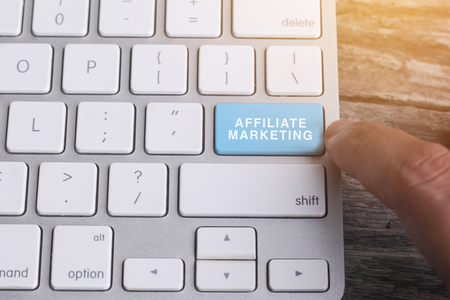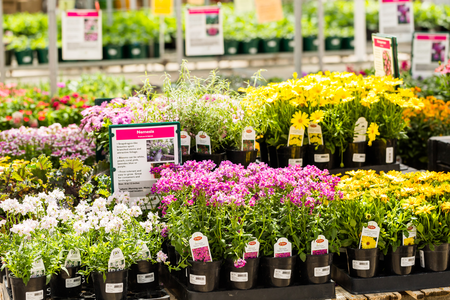The 10 ranking elements for your product page
How do you rank your products in the organic search results of Google? We get a lot of questions on how to do this quickly and easily but the answer is a bit tricky as it always takes time and effort.
However, we’re happy to share our top 10 list of things you could do yourself to improve your rankings.
1. Title tag
The title tag is the most important element of your page. The title tag is shown on Google and should have the most important keywords you want to rank on in your title tag.
On the Garden Connect Platform, the title tag is normally the product name but you can overwrite it if you want to.
Our own homepage has the title tag “Garden Connect | Garden Retail Marketing”:
2. Meta descriptions
The meta description is the part shown underneath the title. It’s the second most important element of your product page. Make sure you don’t add a boring description to this part. Include the product name, price, brand and a reason to click on it.
A nice trick is to add checkboxes to your meta descriptions as Homebase does:
On the Garden Connect Platform, all meta descriptions are generated automatically based on your input but you can overwrite them per item.
3. URL
The URL is an element most people overlook. But the URL should match your product.
So rather than having an URL like this: https://www.yourwebshop.com/products/21341231.php
It should be like the URL’s we applied at Lacoste Garden Centre: https://shop.lacostegardencentre.com/calathea-medallion
On the Garden Connect Platform, the URL is always generated after you’ve added your product name but you can overwrite it if you want.
4. Image filename
The filename of your images matters a lot to Google, especially to Google images.
Imagine Google scans your website and indexes an image called img0815.jpg. That doesn’t tell Google anything about the image and what’s on it, does it?
It’s better to have a filename like this: https://www.yourwebshop.com/files/images/webshop/calathea-medallion.jpg
This can be a time-intensive job to do as you can imagine. You have to download, rename and upload every image again. However, the Garden Connect Platform automatically generates filenames and includes the filename to save you time.
5. Breadcrumbs
Do you know the story of Hansel and Gretel? While walking to the house, they left breadcrumbs so they could find their way back.
Visitors of your website should have their own personal breadcrumbs at their disposal so they can find their way back to a subcategory page.
Breadcrumbs are always generated automatically and have to be on your product page:
As you can see in this example, the breadcrumbs are in light grey under the logo.
6. H1 title
Having an H1 means you can use H2 and H3 as well and that’s correct! However, you can only have 1 H1 title on a single webpage. Every page should have a unique H1. On your product page, that’s normally your product name.
Don’t try to fool Google by adding 2 or 3 H1 tags to your website. It will recognise this and penalise you for trying to cut corners.
The Garden Connect Platform automatically generates H1 titles on most of your pages including your product page. On the Pughs’ website, “Alderin Lantern (Large)” is the H1.
7. Keyword in the first paragraph
After having all these tags and things sorted, it’s finally time to write your product description! But even in your description, you have to keep an eye on your keywords. Make sure you include your product name in the first paragraph of your description.
Repeat the keyword throughout the rest of your description but don’t overdo it. If you have 50 words and repeat your keyword or product name 8 times your text will become unreadable.
8. Bold keyword in the first paragraph
What part of this text would be important to you: this part, or this part?
It’s obvious, the bold text draws more attention. Bold texts matter and highlighting important keywords bold will make sure they will get the attention it deserves from Google and your visitors.
9. Alt-tag of image
The filenames of your images matter and help to rank well but so do alt-tags. Alt-tags are a short description explaining to visitors and to Google what they can see on the image. If you hover your mouse on it, it looks like this:
You can see the name of the product is shown on the alt-tag, Nevada Corner set, on the Flowerland webshop.
Adding alt-tags to images helps a lot to improve your Google rankings in both Google Search and Google images. The Garden Connect Platform helps you to automatically add alt-tags to most of your images on your product page.
10. Subheader with keywords
You now know that you can only use an H1 once, but H2 and H3 can be used a bit more frequently. Ideally, you use them to add a title to a paragraph though we advise you not to write an entire paragraph in H2. We normally use H2, H3 and H4 for elements like tabs, subtitles and navigational items on your product page.
And the blog you just read? The H1 title is “The 10 ranking elements for your product page” and the subtitles are H2, including “10. Subheader with keywords”.
So the next time you wonder why your products aren’t ranking on Google, have a look at the checklist above to make sure you’ve sorted out all the basics!
Feel free to ask any questions you might have in the comment section below or send us an e-mail via info@gardenconnect.com.



